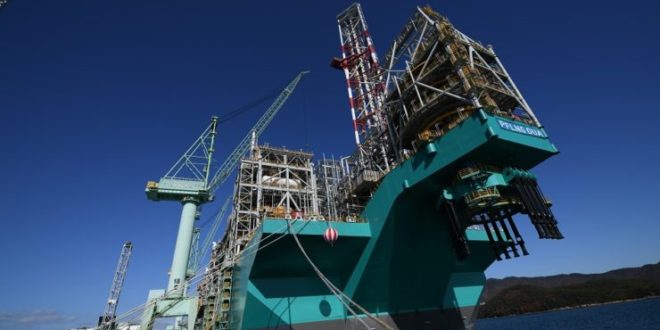U.S. natural gas futures jumped on May 4 to a 15-week high on forecasts for cooler weather and more heating demand over the next two weeks than previously expected and a slowing of output as drillers shut oil wells in shale basins due to the 67% collapse in crude prices since the start of the year.
Those oil wells also produce a lot of gas.
That price increase comes despite long-term forecasts for demand and exports to decline due to government lockdowns to stop the spread of the coronavirus.
Front-month gas futures for June delivery on the Nymex rose 10.3 cents, or 5.4%, to settle at $1.993 per MMBtu, their highest close since Jan. 17.
Looking ahead, gas futures for the balance of 2020 and calendar 2021 were trading higher than the front-month on expectations demand will jump once governments loosen travel and work restrictions.
The U.S. Energy Information Administration (EIA) projected gas production will fall to an annual average of 91.7 Bcf/d in 2020 and 87.5 Bcf/d in 2021 from a record 92.2 Bcf/d in 2019 as energy firms cut spending on drilling.
Data provider Refinitiv said average gas output in the U.S. Lower 48 states fell to 89.8 Bcf/d so far in May, down from an eight-month low of 92.8 Bcf/d in April and an all-time monthly high of 95.4 Bcf/d in November.
The EIA projected coronavirus lockdowns will cut U.S. gas use—not including exports—to an
average of 83.8 Bcf/d in 2020 and 81.2 Bcf/d in 2021 from a record 85 Bcf/d in 2019.
With cooler weather coming, Refinitiv projected demand in the Lower 48 states, including exports, would rise from an average of 84.2 Bcf/d this week to 88.5 Bcf/d next week. That compares with Refinitiv’s forecasts on May 1 of 79.5 Bcf/d this week and 82.8 Bcf/d next week.
Even though the coronavirus is reducing gas use, EIA still expects U.S. exports to hit record highs in coming years as more LNG export plants and pipelines enter service. Still, the agency has reduced its projections on the pace of that growth due to the pandemic.
Refinitiv said average U.S. pipeline exports to Canada rose to 2.9 Bcf/d so far in May, up from a six-month low of 2.4 Bcf/d in April and compared with an all-time monthly high of 3.5 Bcf/d in December.
Average pipeline exports to Mexico, meanwhile, fell 4.1 Bcf/d so far in May, down from an 11-month low of 4.7 Bcf/d in April and a record 5.6 Bcf/d in March.
U.S. LNG exports averaged 7.2 Bcf/d so far in May, down from a four-month low of 8.1 Bcf/d in April and an all-time high of 8.7 Bcf/d in February.

 Iran Energy News Oil, Gas, Petrochemical and Energy Field Specialized Channel
Iran Energy News Oil, Gas, Petrochemical and Energy Field Specialized Channel



